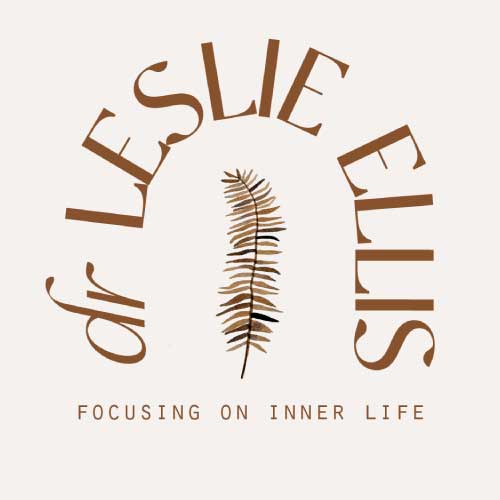When you end a period of sleep deprivation or substance use, your dreams return, sometimes with a vengeance. Dr. Leslie Ellis explains how to understand and manage REM rebound.
While the global pandemic has been identified as a big factor in the recent increase and intensification of dreaming, a phenomenon called REM rebound may be the mechanism at work in some cases. REM sleep is so important that following a period of REM deprivation, our bodies will automatically make up for what it has missed. REM rebound is characterised by intense dreaming and a structural shift in the normal sleep cycle.
Sleep rhythm will return to normal once we have made up our REM sleep debt. This can take days or weeks depending on why, how long and how severely the sleep cycle has been disrupted. There is much in the literature about how to manage sleep problems associated with REM rebound, but very little in the way of help with what to do about all those troublesome dreams. Read on for some simple suggestions from a clinical dream and nightmare expert.
What is REM rebound?
First, we need a basic understanding of rapid-eye-movement (REM) sleep. This is the sleep stage most associated with dreaming. In a typical night, we have 4-5 REM sleep periods that gradually increase in length over the course of the night. In total, we spend about 90 minutes or more in REM sleep during a typical 8-hour night of sleep, with most of our REM concentrated toward morning. If we become deprived of REM, our bodies will drop into REM immediately upon falling asleep instead of moving through the progressively-deepening cycles of non-REM sleep that typically start our night. This is REM rebound, a natural increase in REM to make up for what was missed, often due to sleep deprivation or the kind of stress that leads to restless, broken sleep.
There is considerable research to support the notion that REM sleep and dreaming help to regulate emotional reactivity and to reframe negative experiences. REM sleep affects hormonal balance and sleep homeostasis. To return to the normal, restorative sleep patterns so important to all aspects of our health, we may need to go through a period of intense dreaming to allow our sleep rhythm to reset itself. My suggestion is to befriend this process. A first step is to understand that even our most frightening nightmares are trying to help us by balancing our emotional state and taking the charge out of challenging past and current life situations. We can work with them, not against them. More on this later.
Substance Use and REM Rebound
The most common cause of REM rebound is sleep deprivation, especially very early awakening that cuts off the second half of our sleep. REM rebound also happens when a person stops taking a substance that suppresses REM sleep. These include many commonly-used substances like antidepressants, alcohol, cannabis and benzodiazepines. Paradoxically, many of these substances are used to promote sleep – and while they can help you fall asleep, they disrupt normal sleep architecture, ultimately making the situation worse. (Newer sleep aids like zolpidem do not cause this problem.)
Sleep is critical to our emotional and physical health. Insufficient or poor-quality sleep is associated with poor emotional regulation, diminished ability to consolidate memory, a higher risk of psychiatric illnesses (depression, anxiety, PTSD), obesity, heart disease and stroke as well as increased risk of workplace and vehicle accidents. Clearly, getting a good night’s sleep is critical to all aspects of our health. Getting sufficient REM is intrinsic to this process.
The best way to overcome REM rebound is simple, yet it can also be a challenge for those with chronic difficulty sleeping well. You simply need to get enough good-quality sleep to make up the REM that your body requires. There are plenty of resources available on good sleep hygiene: things like a calming bedtime routine, limiting screen time, caffeine and alcohol before bed, and getting enough exercise are well documented and can help.
However, for some people, the intensely disturbing flood of dream imagery following the cessation of substance use can make it tempting to go back to taking the antidepressant medication or addictive substance they want to stop using. For those in this category, part of the answer is to befriend your dreams, especially those that have returned with great intensity following a period of silence. If you have intense, frequent and disturbing nightmares during the REM rebound period, making friends with these dreams may seem like an impossible task, but it’s not. Few people realize that nightmares are both treatable, and in many ways, also helpful in the emotional recovery process.
Changing Your Relationship With Your Dreams
Dreams and nightmares have been shown to temper emotional intensity. Studies suggest that when we dream about a disturbing scenario, we generally feel better about it than we did before. The big problem with nightmares is that they can be so intense, they wake the dreamer up, so they disrupt sleep rather than helping. A simple solution is to imagine the dream forward; just let it continue from where it left off until you get to a place that feels like more of a resolution. It doesn’t even have to be a triumphant solution, just one that carries the dream forward.
In my experience, this simple process can effectively stop or change a nightmare immediately. It can also take a few tries, and in some cases might require professional help. If you have PTSD or a history of trauma, a professional trained in working with nightmares can make the difference. There are many studies on a version of this method called Imagery Rehearsal Therapy (IRT) that show it often helps, and when it doesn’t, it causes no adverse effects. In other words, it’s worth a try.
In general, getting to know more about your dream world and what it’s trying to tell you will set you up for a more positive relationship with your dreams. I have written extensively about this, and will post a list of resources in the references below. My main message, having worked for decades with the dreams of those recovering from trauma and addiction, is that your dreams are trying to help you, not hurt you. Dream lovers welcome the flood of nocturnal images that characterize a REM rebound. If you are someone who has stopped the use of a REM-suppressant substance, for whatever reason, be prepared for the dreams that will come to you, and find a way to welcome them. Also know that the condition is temporary and if you can stay the course, your normal sleep rhythm will return.
Dr. Leslie Ellis is the author of A Clinician’s Guide to Dream Therapy, and an expert in dreamwork and nightmare treatment. Her web site (www.drleslieellis.com) contains many resources about how to work with dreams and nightmares.
Resources:
There Are No Bad Dreams – a Ted-like talk about nightmares.
Nightmare relief, free PDF: What you can do about nightmares
For clinicians: A Short Focused Course on Nightmare Treatment
Live Oct. 13 (and recorded) Live workshop on Nightmares and the Nervous System
Blog post: Whether and how to work with traumatic nightmares
Blog post: Whether and how to work with traumatic nightmares
Selected references for this article:
Ellis, L. (2019). A clinician’s guide to dream therapy: Implementing simple and effective dreamwork. New York: Routledge.
Feriante J, Singh S. (2020). REM Rebound Effect. In: StatPearls [Internet]. Treasure Island (FL): StatPearls Publishing. Available from: https://www.ncbi.nlm.nih.gov/books/NBK560713/
Krakow, B. and Zadra, A. (2006). Clinical management of chronic nightmares: Imagery Rehearsal Therapy. Behavioural Sleep Medicine, 4(1), 45-70.

